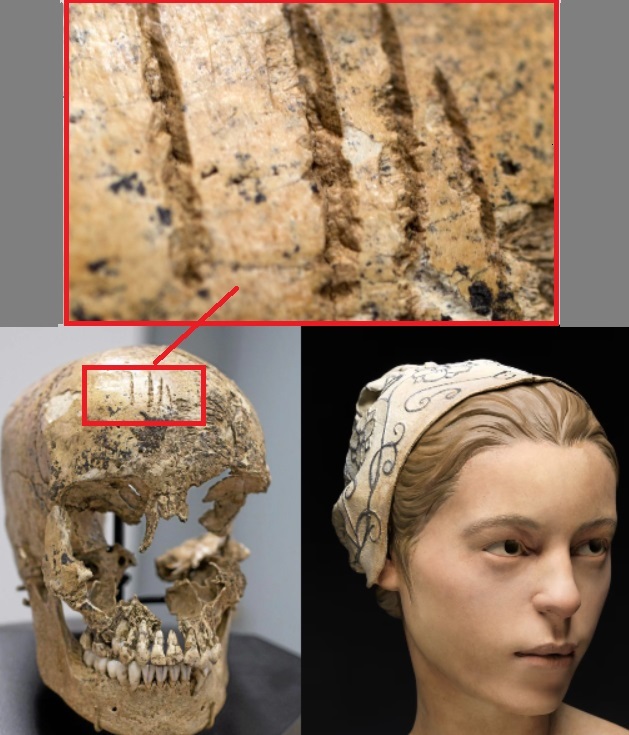In the swamplands of 17th-century Jamestown, archaeologists uncovered a haunting discovery that cast a stark light on one of the most harrowing chapters of early American history. Buried beneath layers of history, the skeletal remains of a young girl, later given the name Jane, revealed evidence of cannibalism. This shocking find opened a window into the unimaginable hardships endured by English settlers during the infamous “starving time” of 1609-1610.
A Colony Teetering on the Edge
Jamestown, the first permanent English settlement in North America, was on the brink of collapse during the winter of 1609. Severe droughts and a dwindling food supply had already placed the settlement in a precarious position. Relations between the colonists and the indigenous Powhatan people, which had once held the promise of cooperation, had deteriorated into hostility. The settlers found themselves surrounded by an unfamiliar and unforgiving wilderness, with dwindling resources and little hope of external aid. It was in this grim context that 14-year-old Jane became a victim of the dire circumstances faced by the colony.

The Evidence Left Behind
Jane’s remains, discovered during excavations in 2012, told a harrowing story. Forensic analysis revealed cuts on her skull and jawbone that bore the unmistakable marks of cannibalism. The cuts were shallow and hesitant, suggesting that they were not the work of experienced butchers. Instead, they reflected the desperation of starving individuals attempting to survive. The discovery underscored the horrific reality of the “starving time,” a period in which food supplies were so depleted that the settlers resorted to consuming whatever they could find—including the remains of their dead.
A Window into Desperation
Through advanced forensic techniques, researchers were able to reconstruct Jane’s face, bringing a deeply human element to her story. Her youthful features provided a poignant reminder of the lives cut short during this period of desperation. This reconstruction not only shed light on her physical appearance but also served as a tangible connection to the broader struggles faced by the settlers. Her face, both haunting and humanizing, reminds us that these were real people grappling with extraordinary challenges, not just distant figures in history books.
The Broader Context of the “Starving Time”
The winter of 1609-1610 was particularly brutal for the Jamestown settlers. Disease, malnutrition, and conflict with the Powhatan Confederacy created a perfect storm of adversity. Out of the 500 colonists who began the winter, only around 60 survived to see the spring. The settlers were confined to their fort, cut off from resources and surrounded by hostility. This period of deprivation tested their physical and psychological limits, pushing them to take drastic measures. Jane’s story, tragic as it is, symbolizes the extreme conditions that defined this chapter of American history.
A Haunting Reminder of Sacrifice
Jane’s reconstructed face is now displayed at the Jamestown Settlement Museum, serving as a stark reminder of the hardships faced by early settlers. Her youthful visage is not just a relic of the past; it represents the resilience and sacrifice of those who came before us. While her story is undeniably tragic, it also offers insight into the determination and resourcefulness that would ultimately allow the Jamestown colony to survive and lay the groundwork for the future United States.
Resilience Amidst Tragedy
Despite the overwhelming adversity, the survival of even a fraction of the settlers speaks to the resilience of the human spirit. These early colonists endured unimaginable suffering but managed to persevere. Their tenacity paved the way for the growth of Jamestown as a critical foothold in the New World. From the ashes of their despair emerged the foundations of what would eventually become a thriving colony. Jane’s story, while somber, also underscores the capacity for hope and survival in the face of seemingly insurmountable odds.
Reflections on History
In modern-day Jamestown, Jane’s story continues to resonate with visitors and historians alike. Her reconstructed face and the evidence of her tragic fate serve as powerful symbols of the complex and often painful history of early colonization. They remind us that the birth of a nation was not without profound human cost. The lessons from Jamestown’s “starving time” offer a deeper understanding of the struggles and sacrifices that shaped America’s origins.
A Legacy That Endures
Today, Jane’s story is more than a grim footnote in history. It is a narrative of resilience, survival, and the indomitable human spirit. While her life was tragically short, the lessons drawn from her remains endure, offering valuable insights into the challenges of colonization and the lengths to which humanity will go to endure. Her legacy is a reminder of the strength and determination that define the human experience, even in its darkest chapters.
As we walk through the reconstructed settlement of Jamestown, Jane’s story serves as both a cautionary tale and a testament to resilience. The archaeological evidence, paired with her hauntingly human face, creates a vivid narrative that bridges the centuries and connects us to those who lived, struggled, and perished in the early days of America’s history. Her story reminds us that the past, no matter how painful, holds lessons that continue to shape our understanding of resilience and sacrifice in the face of adversity.





